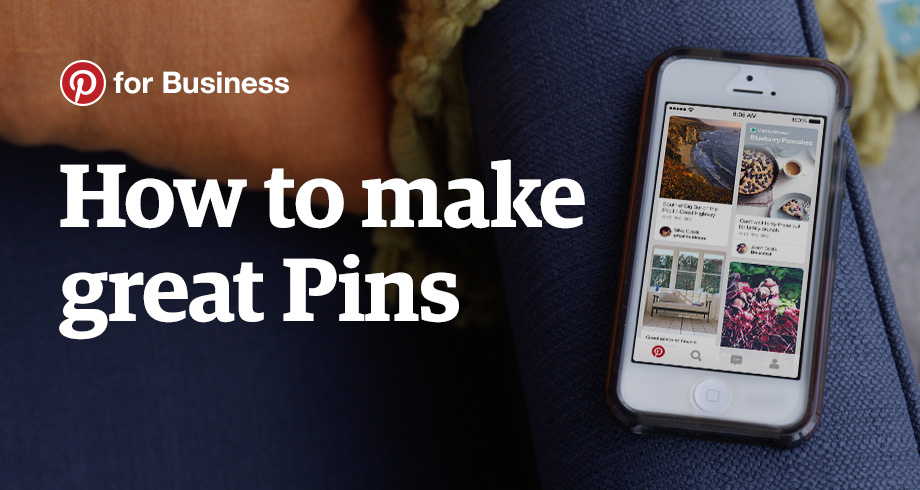Pinterest, the visual-image social media-sharing site, has 176 million registered users and 100 million active users worldwide, according to DMR Stats. Those users — 85 percent of whom are women — use the site to pin images from online content they love and share them with their fans and followers.
From the perspective of small businesses, that demographic represents a lot of potential buying power for anyone looking to reach decision-makers and influencers for different products and services. Smart businesses will have already set up a business account on Pinterest and availed themselves of the site’s basic analytics.
But if you’re ready to take things one step further still, you can set up a business account to launch a Pinterest advertising campaign. An existing personal account can be changed into a business account; just be sure to allow a few days for your account to be approved by the Pinterest team.
How to advertise like a pro on Pinterest
Pinterest offers two types of pins for small businesses:
Buyable Pins are a shopping service on the Pinterest app. They work only on Android or iOS phones within the app itself, so you’re going to reach a smaller subsection of customers when you choose this option. People often pin their wish-list items. Buyable Pins take a wish list to the next step, providing customers with a secure, online checkout via Pinterest to actually purchase the item.
Promoted Pins are pins that become display ads. These ads enable you to pay to have an existing pin shared or visible on related boards. Using keywords that you tag onto your pin, the site determines where to display them. You pay for your promoted pins by setting a budget, similar to a Google AdWords account or a checking account. The site then deducts the cost of each time the pin is displayed from the account. You can set specific goals for your campaigns, such as awareness, traffic or engagement, from the business dashboard on the site.
Five tips for creating great pins for Pinterest advertising
Once you’ve set up your business account, chosen the type of ad you’d like to run and set your budget, it’s time to create pins for your campaign.
1. Choose images that are unique and eye-catching. Pinterest is all about eye candy. The more startling, unusual or engaging your image, the better. Double-check the licensing agreements for any stock photos you use, to make sure the agreement covers social media advertising use. Novel images with unusual perspectives get plenty of attention. Branded products are fine, as well, as long as the brand isn’t the only thing in the pin.
2. Resize your images so that the layout is vertical, rather than horizontal. Pinterest recommends a height of 735 by 1102 pixels.
3. Add text to your image. Pinterest does not allow “call to actions” like “Click this pin for more!” but you can add simple text to your image that describes what the pin and its related content are about.
4. Make sure the description text under the pin includes keyword-rich phrases and is enticing enough to interest the casual Pinterest user. Good descriptions are very important for SEO, both inside and outside Pinterest, to have search engines find, index and share your pins.
5. Pin your image to your board on Pinterest. This ensures that the ad will drive traffic to your company’s Pinterest boards. You can set up unique boards for a campaign or include advertising pins on an existing board, but it should be a board that your company manages, not a group board or shared board.
Pinterest states in its free How to Make Great Pins Guide that pins are “ideas.” The best pins encapsulate one simple concept or idea that sparks interest in a viewer. Simple and bold images work best, because too much detail can get lost, especially on smaller mobile-device screens.
In addition to bold, novel images, lists and how-to guides are popular. People like to learn from pins, and the more your pin can tell a story at a glance, the more likely people will be to click it and read through to the longer content on your website.
Pins must be approved for advertising.
All pins submitted for Pinterest advertising must be approved by the company before your campaign launches. While most pins are approved, some do get rejected. Reasons why that happens include:
- Lack of content on the pin’s landing page
- Hard-sell messages on the text overlay
- Too many hashtags or irrelevant hashtags
- Prohibited content that is shocking or sexually explicit content, etc.
- A (prohibited) call to action
- Prices or explicit promotional language
Pinterest campaign success
Successful Pinterest advertising campaigns draw users into longer content that answers the premise the original pin posed. If your pin promises to show someone how to do something, for instance, the link accompanying the pin should lead to an article on your website that shares step-by-step instructions on the topic.
You don’t necessarily need fresh content for a Pinterest advertising campaign. Your most popular content can work well for the campaign. Review your site analytics to see where visitors prefer to enter your site. Build your campaign around what your customers want to know, and you’ll develop great Pinterest campaigns that achieve your goals.
Resources:ExpertOnline360.com
